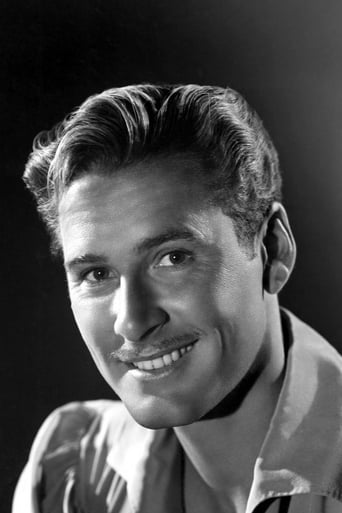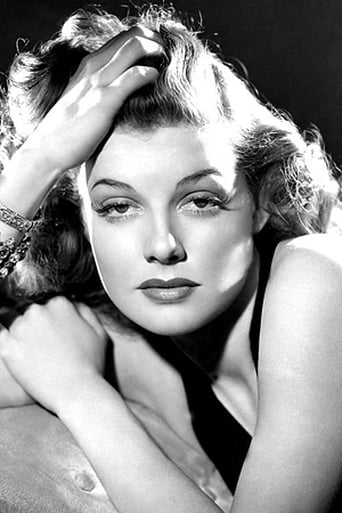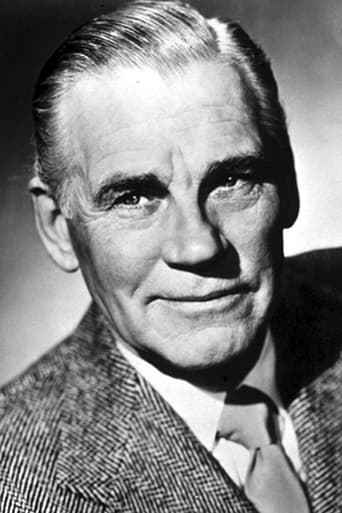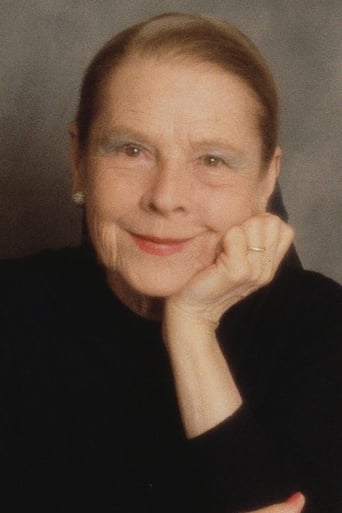Phonearl
Good start, but then it gets ruined
Afouotos
Although it has its amusing moments, in eneral the plot does not convince.
Roman Sampson
One of the most extraordinary films you will see this year. Take that as you want.
Kimball
Exactly the movie you think it is, but not the movie you want it to be.
weezeralfalfa
My review title is, of course, a take on the Warners film released 2 years earlier: "They Died With their Boots On", also starring Errol Flynn, as G.A. Custer, and featuring the annihilation of his cavalry command by a confederation of Native Americans attempting to defend their treatied homelands against the illegal invasion of swarms of gold seekers, who generally considered the N.A.s a much inferior race of 'savages', justifying their virtual annihilation, if necessary. Sound familiar? In this powerfully dramatized film, it's the Nazis who are playing the role of Custer and the gold seekers, who feel justified in overrunning the traditional territories of their neighbors, with the ultimate goal of replacing these peoples, considered genetically inferior, if not raving savages, with their own offspring. As in the case of Custer, the natives(Norwegians) have an advantage in a sizable numerical superiority and greater familiarity with the territory, if a marked disadvantage in armaments.Fulfilling its wartime purpose of encouraging public support to help defeat the Nazis, the film strongly suggests that, with sufficient outside support in smuggled armaments, 'resistance' groups in Nazi-occupied regions might be successful in significant sabotage and passive resistance projects, making a significant contribution toward the ultimate unraveling of the Nazi empire. The film ends with the locally victorious Norwegians trudging off into the forest near their fishing village, fearful of Nazi reprisals for their annihilation of the sizable German garrison, and presumably planning further sabotage operations until the Germans leave. Accompanying this visuals, we hear a historic FDR speech, featuring the plight of the Norwegians, along with a stirring final rendering of the recurring Luther hymn "A Mighty Fortress Is Our God" in the background, making the resistance against the Nazis seem more like a 'holy war' against the forces of evil. This is the only one of the 5 war-propaganda films starring Flynn released by Warners during the war that was not directed by Raoul Walsh. Lewis Milestone was born to Russian Jewish parents, who emigrated to the US when he was a teen. Thus, it's quite understandable that he relished the directing job of several anti-Axis films during the war. As with the present film, "The North Star" emphasizes the hopes and activities of 'resistance' groups within Nazi-controlled regions. The highly acclaimed "A Walk in the Sun" looks at the war from the myopic viewpoint of the ordinary soldier. "The Purple Heart" dramatizes the incarceration and trial of a group of American fliers captured by the Japanese. Like the fanatical Nazi Captain Keonig, in the present film, the fanatical Japanese commander involved commits suicide in the end: his indoctrinated assumption of what American servicemen are like, and the myth of the invincibility of the Japanese armed forces, shattered.Very ironically, Helmut Dantine, who plays Captain Keonig, imbued with the standard Nazi assumption of racial superiority, was the former leader of Vienna anti-Nazi activists, forced to flee to the US, winding up in LA. He played a similar role in several other wartime films, including "Northern Pursuit", where Flynn again plays his chief nemesis.The film begins with a Nazi patrol plane (which looks like a slightly modified Lockheed Hudson light bomber, used in several Warner wartime films) observes a Norwegian flag flying over a coastal German garrison, instigating a patrol boat to investigate. They discover the gruesome sight of hundreds of German and Norwegian bodies strewn all over outside and inside the compound and adjacent fishing village. Otherwise , both seem deserted , except for one deranged Norwegian, who is promptly machine-gunned. We will see a similar sight near the end of the film. Meanwhile, the remainder of the film consists of a flashback to events leading up to this massacre.The bulk of the film consists of characterizations of a spectrum of responses to the Nazi takeover: from outright cooperation with the Nazis, to uneasy neutrality, to determined passive and/or active resistance. Some change their position during the film. Another major section deals with the secret acquisition and hiding of armaments from a British submarine: part of a British plan for a coordinated uprising of all coastal towns against the local Germans. This plan is articulated by a British spy(played by Henry Brandon), as one of the garrison Germans. The last part of the film deals with the actual armed revolt. Although many Norwegians die, some seem immune to the German machinegun fire.Flynn's character, as the leader of the local resistance group, is named Gunnar, as was the most famous leader of Norwegian resistance(Gunnar Sonsteby), tales of his activities having already reached the outside when this film was scripted... Glamorous-looking Anne Sheridan, as Gunnar's gung-ho 'resistance' girlfriend, makes the most convincing romantic partner for Flynn in his 5 war-propaganda films...Nancy Coleman, who played an anti-Nazi German and Flynn's fleeting romantic interest in the previous "Desperate Journey", here plays the 'kept' Polish mistress of the collective German officers, who mocks them when they are facing annihilation, being shot in response...Richard Fraser plays the conflicted pastor: advocating non-resistance, but firing the first shots of the showdown, when the 'resistance' leaders are about to be executed.There's so much more to this film, but I'm about out of space.
TurboarrowIII
This is an uplifting film. Obviously it was meant to be and it is very good propaganda. In 1943 the Nazis were still far from beaten and this film shows the defiance of ordinary Norwegians against a brutal oppressor.Errol Flynn isn't somebody who many people would think of to play a Norwegian. However, I think he is very good as one. He provides his usual heroic performance, albeit more understated than normal, and shows the sort of determination that many people were showing in real life at the time to defeat the Nazis.The ending is good especially when the German captain played by Helmut Dantine shoots himself. I believe this was meant to portray the fact that a devout Nazi, as Dantine's character was, was so shocked that the Nazis could be defeated by anybody that he couldn't take it so had to commit suicide. This was meant to show that by fighting back against the Nazis they could crack.An undoubted propaganda film made at a time when the war was still not definitely decided I thought it was very good at getting the message across that there was at least light at the end of the tunnel in the fight to rid the world of Nazism.
Jeff (actionrating.com)
Skip it – Only see this movie for its historical influence. This is actually a very good movie, but it's more of a drama. This movie becomes legendary when you consider it was actually made during World War 2. The final battle is surprisingly good and worth the wait. I've never seen so many Nazis getting gunned down, and so much passion and emotion in a battle. It's the story of Norwegian resistance fighters. It is a very old movie and pretty slow in parts, and that's why most people haven't heard of it. Compare it to the modern day "Defiance." "Edge of Darkness" has been nearly lost over time, but it is one of Errol Flynn's best considering its significance. Action movie, no. Classic war movie, yes. 2 out of 5 action rating
richard-1787
During World War II Hollywood, as its contribution to the war effort, made a lot of movies designed to convince Americans to support the war. Some of them can only be excused by the need to convince Americans to win the war at all costs. Others, like Casablanca, will be ranked as among the greatest movies ever made as long as people watch movies.The Edge of Darkness isn't on a level with Casablanca, but it's not far short of that. The director, Lewis Milestone, had made such great movies as All Quiet on the Western Front and The Front Page. He directs this movie, blessed with a largely great script, with a brilliance and power that is second to none. By the end, even the most convinced pacifist will be clamoring to kill as many Nazis as possible. Even Casablanca and Mrs. Miniver do not stir up a hatred of the Germans the way this does. Like Leni Riefenstals' The Triumph of the Will, this movie shows how passions and hatred can be evoked outside all reason - a very frightening thought.But everything in this movie is good. Errol Flynn has to act - there is no swinging from vines here - and shows that indeed he can, aided by his magnificent voice. Ann Sheridan, often dismissed as a very attractive pin-up girl, holds her own in the woman's acting division against such powerhouses as Judith Anderson and Ruth Gordon, both of whom turn in masterful performances. Walter Huston is his usual impressive self, as are all sorts of "character actors" who, given real characters to develop here, show just why they are great actors: Morris Carnovsky, Charles Dingle (who has given so many great performances, as in The Little Foxes), even Virginia Christine, who later went on to be Mrs Olson for the Folger Coffee commercials. Because this script is so well written, even the "little people" become outstanding individuals, developed to their fullest by great performers.It's fairly predictable until the scene when the local schoolteacher is almost killed by the Nazis in public. From the revolt that that triggers through the end of the movie the movie rises to a level of mastery that can't be beat. This movie must have had an overwhelming effect on Americans during the war. Even today, it takes a hold of you and controls your thoughts and feelings no matter how hard you try to resist.So then. One part Cascablanca, one part Mrs. Miniver, one part The Triumph of the Will, and a lot of just great direction and acting. If you haven't see it, make sure that you do. And make sure you have lots of Kleenex.





